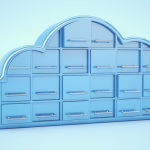Cloud attendance systems have emerged as a powerful tool, revolutionizing the way SMEs handle employee attendance and time tracking. This comprehensive article delves into the concept of cloud attendance, its advantages, implementation strategies, and the role it plays in streamlining workforce management for modern SMEs.
Cloud Attendance for Modern SMEs
The Evolution of Attendance Management
Traditional manual attendance tracking methods are error-prone and time-consuming, prompting the need for digital solutions.
Benefits of Cloud Attendance Systems
- Effortless Tracking: Employees can clock in and out from anywhere, ensuring accurate time recording.
- Enhanced Transparency: Real-time attendance data enables managers to monitor and optimize workforce productivity.
- Reduced Administrative Burden: Automation minimizes paperwork and administrative tasks related to attendance management.
Navigating the Transition to Cloud Attendance
- Assessment and Planning: Evaluate the organization’s needs, existing systems, and readiness for cloud adoption.
- System Customization: Configure the cloud attendance system to align with the company’s attendance policies.
- Employee Training: Provide comprehensive training to ensure seamless adoption and optimal usage.
Beyond Clocking In: Cloud Attendance and Employee Engagement
Reinventing Employee Experience
Cloud attendance empowers employees to manage their own attendance, promoting a sense of ownership and engagement.
Facilitating Remote Work
Cloud attendance systems accommodate remote work by allowing employees to mark their attendance regardless of location.
The Role of Cloud Attendance in Modern HR Management
Data-Driven Decision Making
The rich data provided by cloud attendance systems assists HR teams in making informed decisions related to staffing and resource allocation.
Integration with Payroll
Seamless integration with payroll systems ensures accurate and timely compensation for employees.
Enhanced Compliance
Cloud attendance solutions help SMEs adhere to labor laws and regulations by maintaining accurate records.
Implementing Cloud Attendance: A Case Study
Enhancing Efficiency at XYZ Enterprises
By adopting a cloud attendance system, XYZ Enterprises experienced a 20% reduction in attendance-related errors and saved valuable HR hours.
Expert Insights
“The agility and flexibility offered by cloud attendance systems enable SMEs to effectively manage their workforce, resulting in improved productivity.” – Dr. Emily Adams, HR Technology Expert.
How Time Central’s HRMS Scheduling Software Assists in This!
- Efficient Workforce Management: Time Central’s HRMS scheduling software enables SMEs to create optimized employee schedules, ensuring adequate coverage and minimizing overtime costs.
- Real-Time Updates: The software offers real-time scheduling updates, allowing employees to access their schedules on the go and reducing confusion.
- Automated Shift Allocation: The software automates the allocation of shifts based on employee availability, skills, and business needs.
Key Considerations for Cloud Attendance Implementation
Security Measures
Ensure robust security measures are in place to safeguard sensitive attendance data from unauthorized access.
Scalability
Choose a cloud attendance solution that can accommodate the organization’s growth without disruptions.
Conclusion
The era of manual attendance tracking is giving way to the efficiency and convenience of cloud attendance systems. Modern SMEs stand to benefit greatly from adopting this technology, as it simplifies attendance management, enhances workforce productivity, and enables a more engaging employee experience.
FAQs
Ques 1. Can cloud attendance systems be customized to fit specific attendance policies?
Ans 1. Yes, cloud attendance systems can be configured to align with the organization’s attendance policies and rules.
Ques 2. Are cloud attendance systems secure and compliant with data protection regulations?
Ans 2. Yes, reputable cloud attendance providers implement stringent security measures to protect attendance data and ensure compliance with data protection laws.
Ques 3. Can cloud attendance systems be accessed remotely?
Ans 3. Yes, cloud attendance systems are accessible from anywhere with an internet connection, making them suitable for remote and hybrid work environments.
Ques 4. How do cloud attendance systems integrate with existing HR and payroll systems?
Ans 4. Cloud attendance systems can seamlessly integrate with HR and payroll software, allowing for accurate and automated payroll processing based on attendance data.
Ques 5. Can cloud attendance systems accommodate various types of leaves and attendance patterns? Ans 5. Yes, cloud attendance systems can be customized to support a wide range of leave types and attendance patterns, catering to the diverse needs of modern SMEs.
Ques 6. What benefits do cloud attendance systems offer compared to traditional attendance methods?
Ans 6. Cloud attendance systems offer real-time data, reduced administrative burden, remote access, and enhanced accuracy, which are often lacking in traditional attendance methods.






